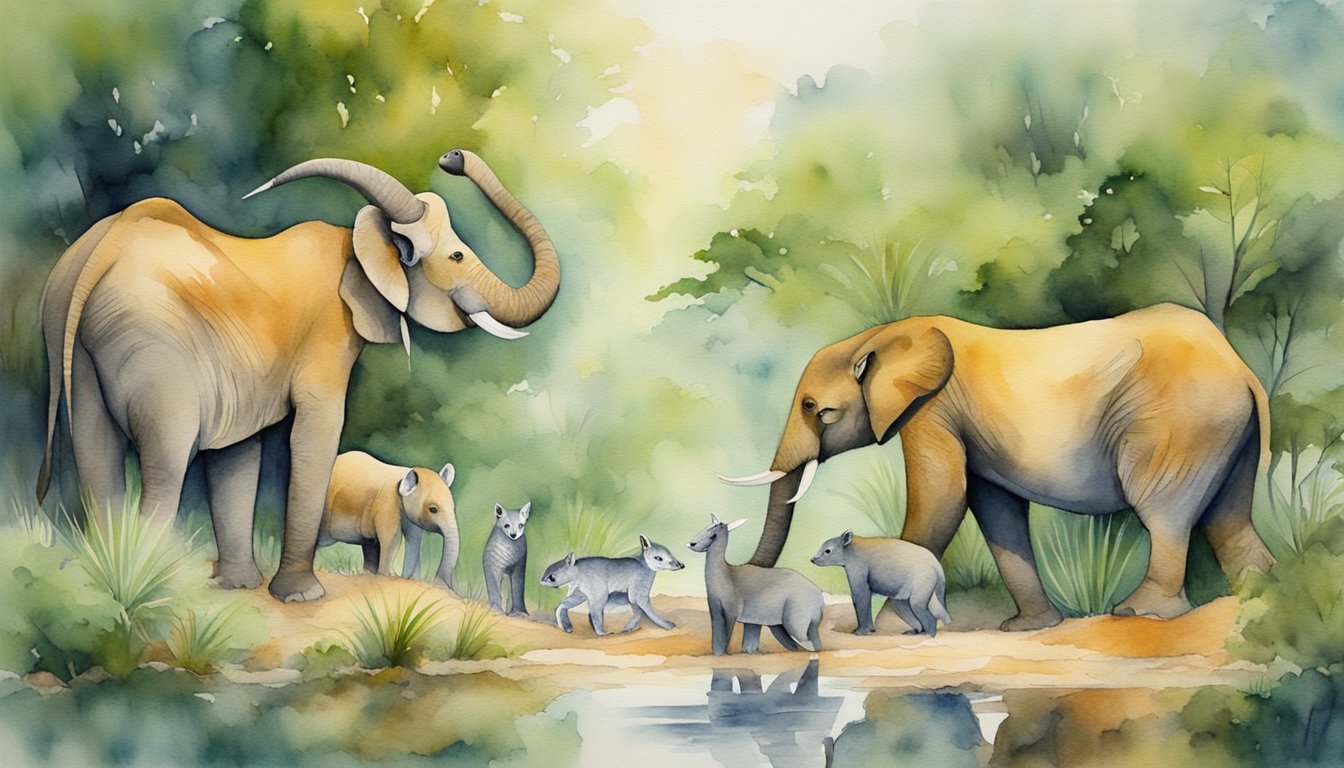Exploring the World of Animals
Incredible Diversity in Nature
The natural world offers an incredible range of diverse animal species. Some are familiar, while others are so strange and amazing that it’s difficult to believe they exist. For example, did you know that the blobfish is considered the “ugliest animal” due to its gelatinous appearance yet it’s perfectly adapted to its deep-sea environment?
Animals can be found in every corner of the Earth, from the deepest oceans to the highest mountains. Some, like the fish that live in the dark depths of the sea, have developed unique ways to survive and thrive in their extreme habitats.
Interactions with Their Habitats
Every animal plays a role in their ecosystem, often profoundly impacting their habitat and other species. For instance, National Geographic highlights how elephants create water holes in dry regions by digging with their tusks, providing water sources for other animals.
Likewise, pollinators such as bees and hummingbirds play a crucial role in the reproduction of flowers, which in turn supports entire ecosystems. The interconnectedness of animals and their surroundings is a marvel to behold.
Adaptations and Survival Skills
Adaptation is a hallmark of the animal kingdom. Animals have evolved some truly astonishing skills to ensure their survival. For example, the mimic octopus can mimic the appearance and movements of a variety of other marine species to evade predators, while certain fish have developed bioluminescence to navigate and attract prey in the dark depths of the ocean.
Throughout history, animals have faced numerous challenges to survive and prosper. Some have even managed to adapt to living in space, like the tardigrade, a microscopic creature that can withstand extreme radiation and temperatures.
The Role of Play in Animal Lives
Play is not just a human activity; it’s also essential for many animals. Scientists have observed playful behaviors in species like dolphins, dogs, and monkeys. These interactions, often similar to those seen in human children, are thought to help animals develop social skills, cognitive abilities, and physical coordination.
Engaging in play also allows animals to hone their survival skills in a friendly and non-threatening context. For instance, cubs may wrestle with each other to improve their hunting and fighting skills, while birds may play with objects to improve their dexterity.
In conclusion, the world of animals is diverse, astounding, and worthy of exploration. From incredible adaptations to intricate relationships with their habitats, the animal kingdom is teeming with wonder and fascination.
Conservation and Animal Behavior

Threats to Wildlife and Conservation Efforts
Wildlife around the world faces numerous threats, including habitat loss, climate change, and human interference. For example, the gorilla populations in Africa have declined due to deforestation and poaching. Conservation efforts, however, are being employed to protect and preserve these animals.
Polar bears are also at risk due to the shrinking Arctic ice, which makes it challenging for them to hunt seals – their primary food source. California has had its fair share of animal conservation concerns too, with some native species such as the black bear facing habitat loss and urbanisation.
Animal Intelligence and Emotions
Beyond the struggles that animals face, there are countless instances of incredible intelligence and emotional depth in the animal kingdom. For example, gorillas have been observed using tools to aid their daily tasks, while elephants are well known for their long-term memory and emotional bonds with their families.
Evidence of highly intelligent animals can be found beyond the large, complex mammals, as well. Ants, for instance, display impressive collaborative behavior in their colonies, working together to achieve their goals. Sea slugs exhibit intricate navigational skills and the ability to learn from their environment.
Cultural Significance and Human Interactions
Animals also play a crucial role in cultural interactions across the globe. In India, leopards have an important cultural significance, but conflicts between these predators and local communities can lead to threatening situations for both people and wildlife.
Aspiring to appreciate and study animals, many people are drawn to animal shows on media platforms like YouTube, showcasing animal behaviors and breakthroughs in research. Renowned conservationists, such as Jane Goodall and Dian Fossey, have gained worldwide recognition for their tireless work to better understand primates and promote their protection.
In conclusion, the conservation of animal species and understanding their behavior is critical in preserving biodiversity and enriching human culture. Through the work of dedicated conservationists and the continued fascination in learning more about animals, we can strive for a sustainable balance between humanity and nature.

